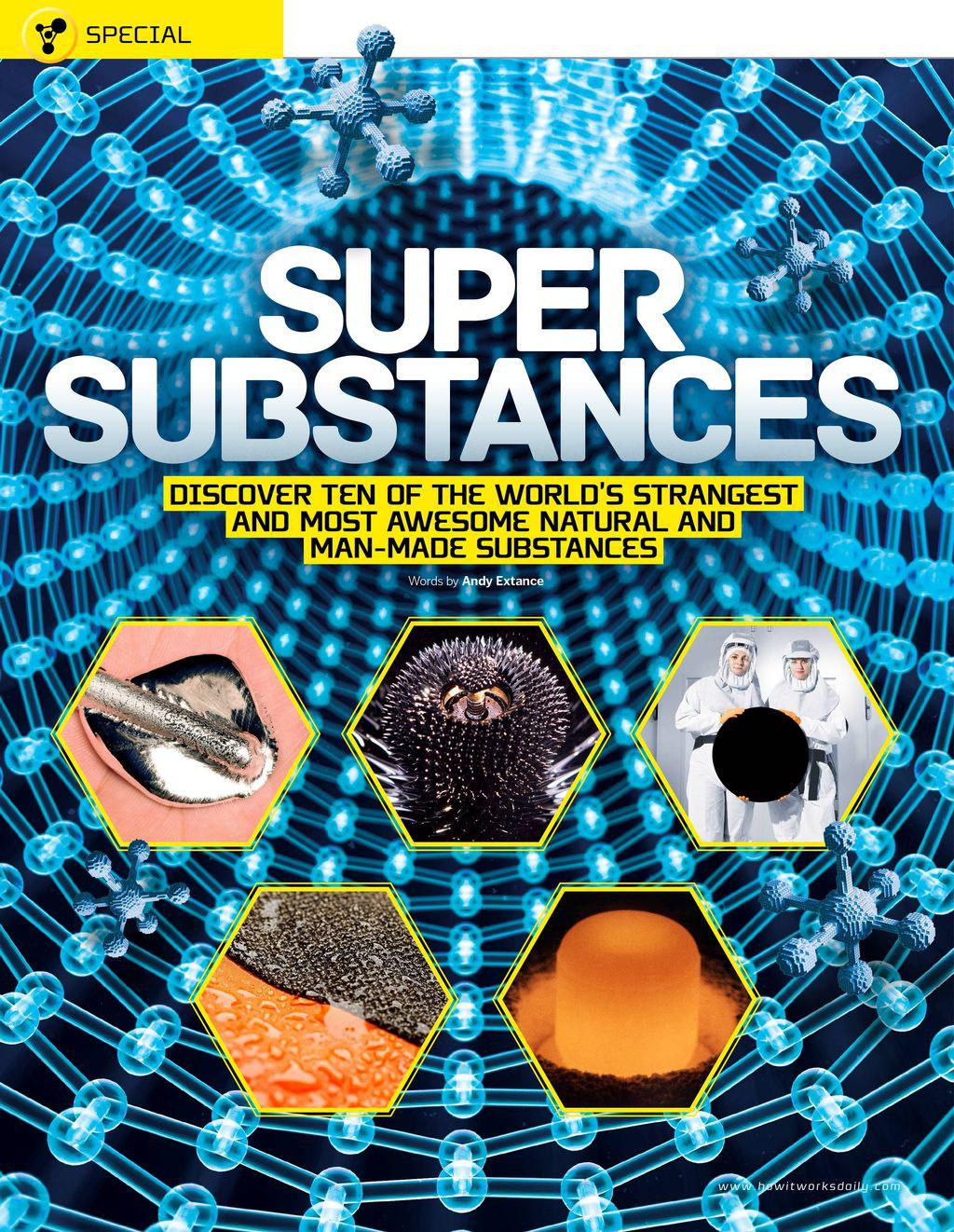UNLIMITED
SUPER SUBSTANCES

All substances are built up from the same set of 118 elements, so how is it possible that they can be so different? Some elements are interesting in themselves, like gallium, which melts in people’s hands, or the powerful nuclear fuel plutonium-238. The atoms of more ordinary elements, like carbon and hydrogen, make up the everyday objects around us. Atoms linked together as molecules even make up our own bodies. Often, carbon atoms are linked together in long chains to create the plastics that we both love and hate. But in some molecular arrangements, carbon can become rather extraordinary.
Organised in flat sheets as graphene and made into an aerogel, carbon becomes the lightest material on record. Carbon also makes the darkest material ever, called Vantablack, in the form of nanotubes that are effectively rolled-up graphene sheets. Or, when combined with hydrogen and fluorine in chains, carbon is part of waterproof textiles that keep us dry.
Mixtures of atoms and molecules, or just mixes of different molecules, can be just as awesome. Ferrofluids combine iron, water and other more complex molecules to give uniquely spiky shapes.
Sometimes the properties that a particular arrangement of atoms provides are useful, sometimes they’re dangerous. They can often be entertaining
You’re reading a preview, subscribe to read more.
Start your free 30 days





